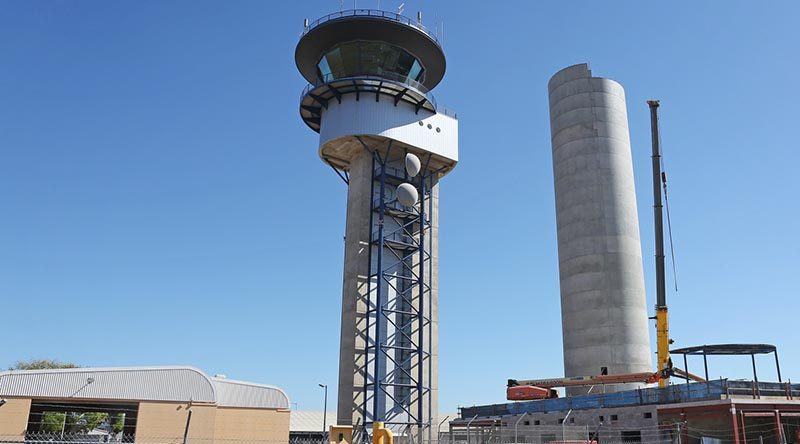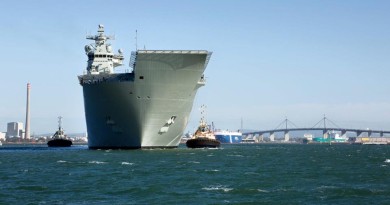RAAF Base Darwin getting new control tower

A new air-traffic-control tower is taking shape at Darwin International Airport in preparation for the arrival of Australia’s new OneSKY air-traffic-management system.
CAPTION: New (right) air-traffic control tower construction at RAAF Base Darwin, adjacent to the old tower (left), which will eventually be demolished. Photo by Sergeant Ben Dempster.
Under the joint Defence/Airservices Australia ‘OneSKY’ program, a completely new fit-out of state-of-the-art air-traffic-control (ATC) equipment necessitated the construction of a brand new ATC tower.
Defence contractor Lendlease commenced works in July 2019 at the site of the joint military and civilian airfield, which is also leased by Darwin International Airport.
The project will enable the seamless and continued delivery of air-traffic-control services for the region.
Royal Australian Air Force air-traffic controllers and communications electronics technicians from Number 452 Squadron who support both military and civilian air movements, domestic and international, will transfer to the new facility once installation of ATC systems and software are complete.
The new tower and accompanying facilities are essential infrastructure to continue to safely manage ground and airspace operations around RAAF Base Darwin.
Darwin International Airport has been a joint-user airport with shared civil/military facilities since 1946.
Defence provides air traffic control facilities at the airport, staffed by Defence personnel – however, DIA leases the current air traffic control site to Defence.
The existing ATC tower was constructed in 1998 and became fully operational in 1999 and will be demolished once the new tower is fully tested and operational.
The OneSKY Australia Program is an partnership between Airservices Australia and Defence to develop a new integrated civil and military air traffic management system, known as CMATS.
CMATS will replace the current and separate civilian and military ATM systems.
The OneSKY project has had a somewhat troubled past, and is estimated to be nearly 11 years behind its initial intended schedule, with a current projected acceptance date in early 2026.
The Australian National Audit Office says the program has an estimated total cost of more than $4.11billion.
.
.
.
.
.
.

.
.





